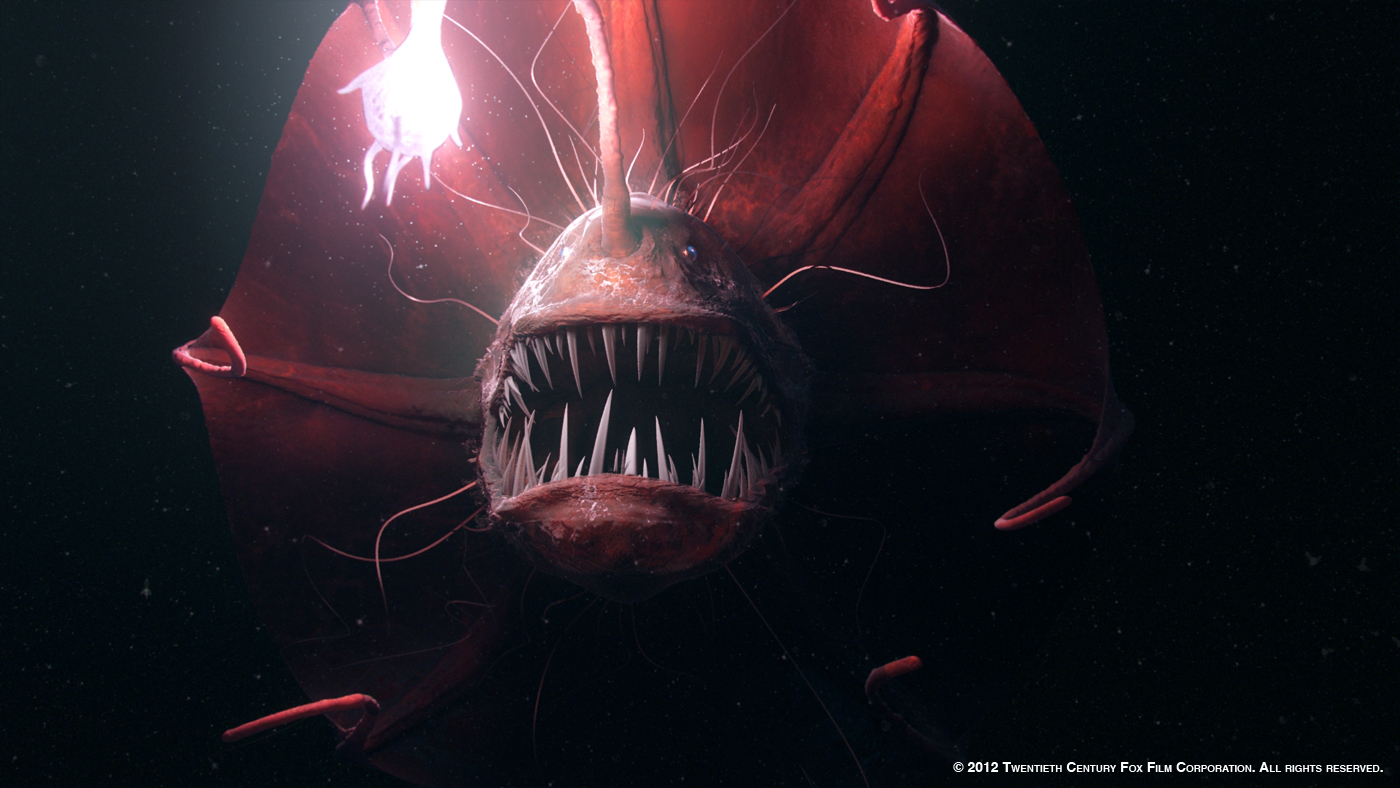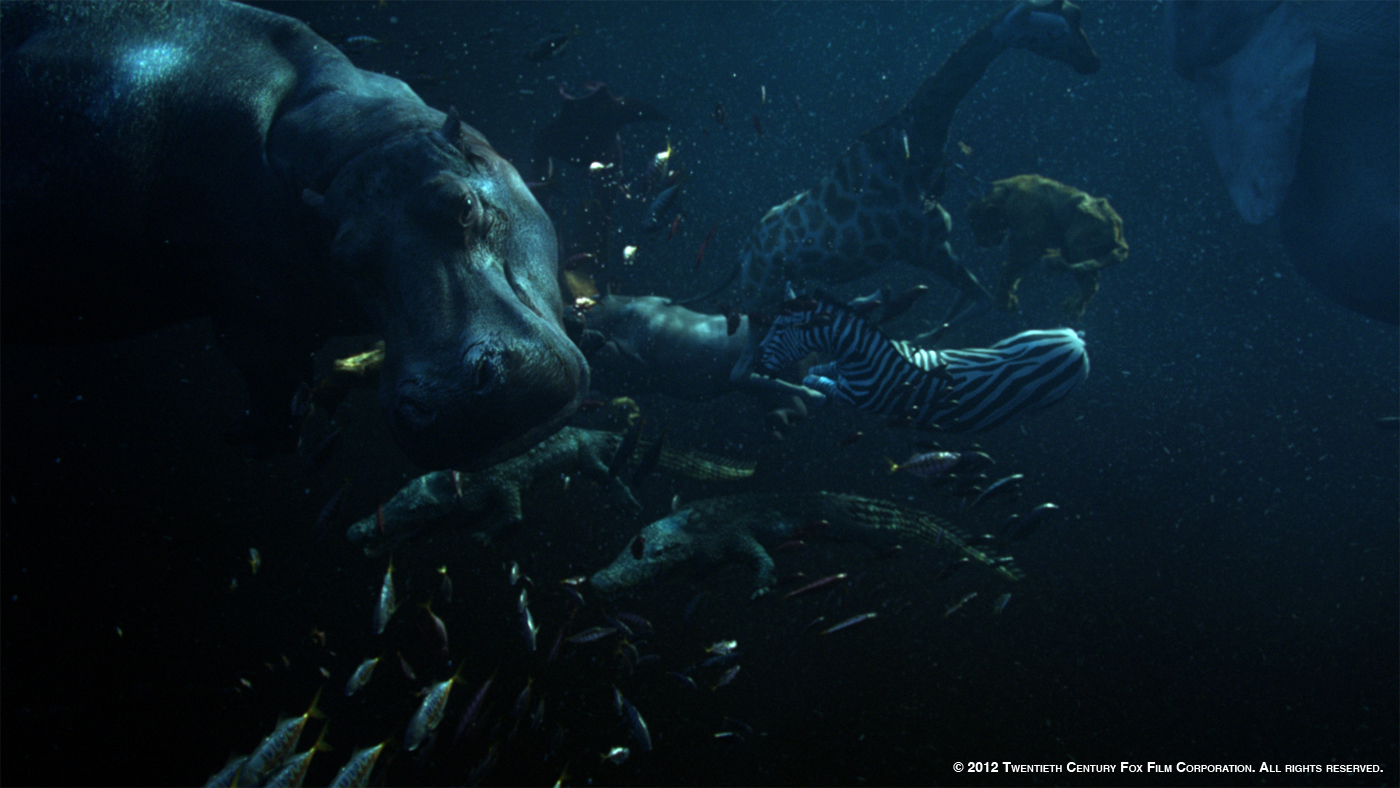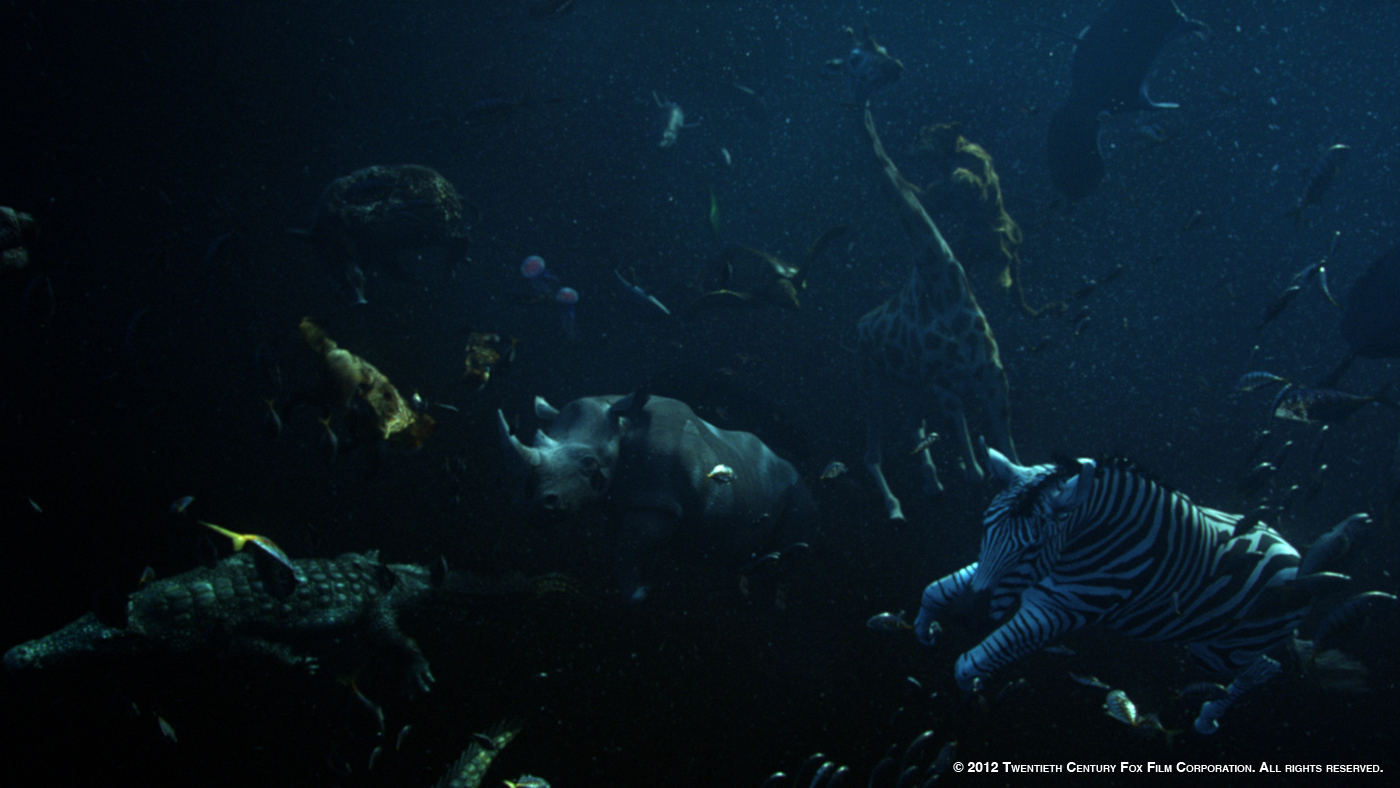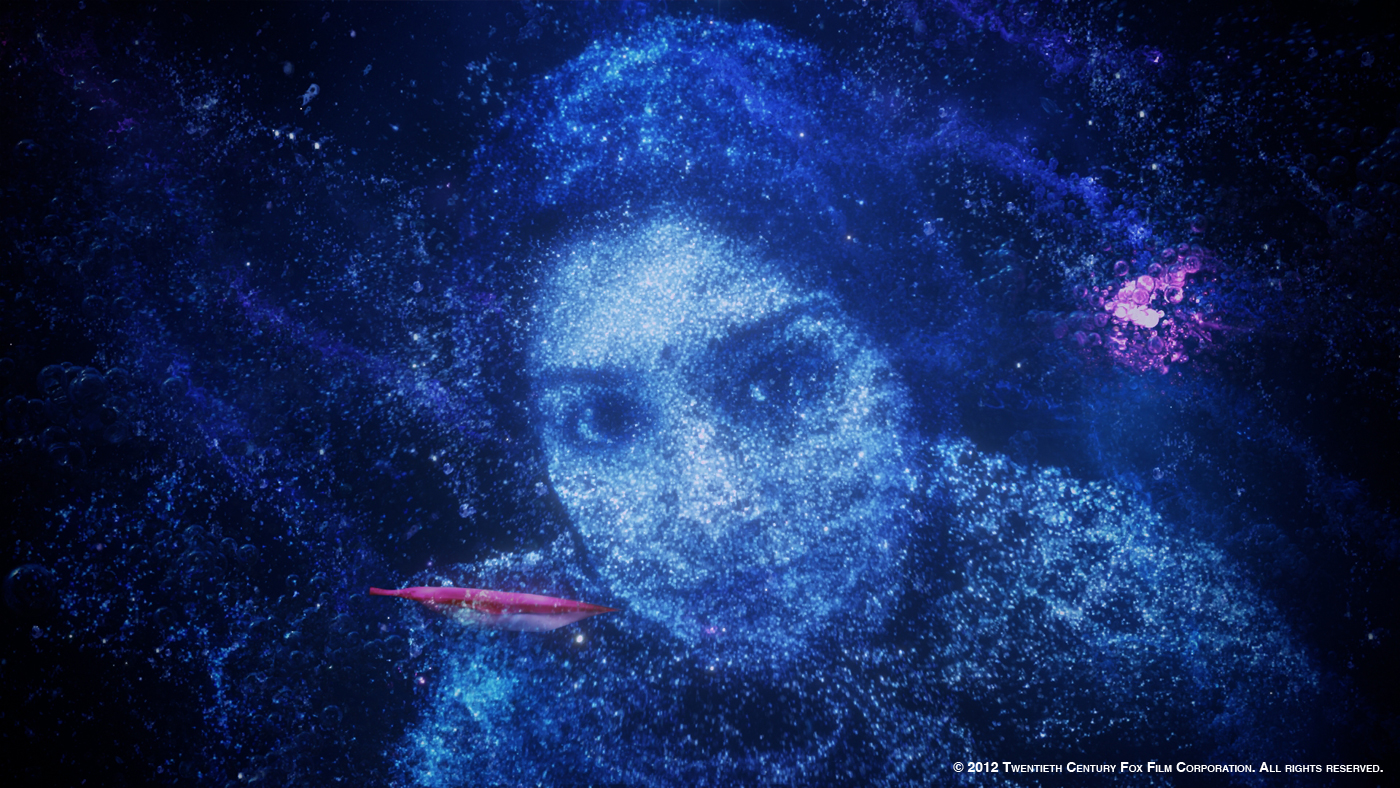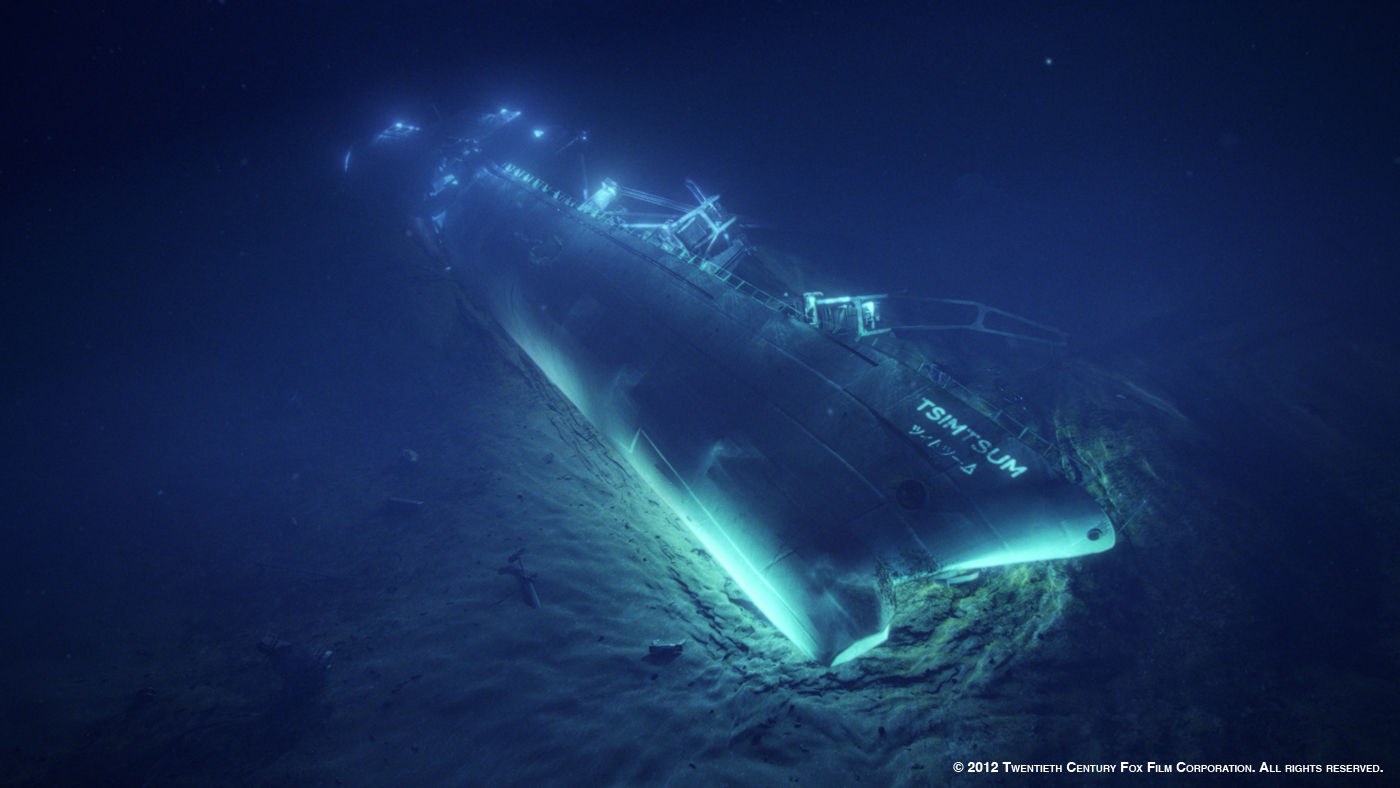Geoffrey Niquet is back on The Art of VFX. He had explained his work on ENTER THE VOID. He speaks to us now about BUF work on LIFE OF PI.
How did BUF got involved on this film?
This is a question that should be asked Pierre Buffin and preproduction department. My contribution began in the test phase and the competition.
How have you collaborated with director Ang Lee?
During the research phase, we got a call per week where we were presenting him all the tests and graphic research proposals and thereafter, once in production, a more classic relation with Bill Westenhofer and sometimes Ang Lee was there during the presentations.
What did you do on this film?
A long and complex shot of 1min 30 or very different sections that are each other connected.
What were the indications and expectations of Ang Lee with this continuous shot?
His early indications were very vague and fragmentary. Visually: watercolor. For the narrative side: he asked us for a description of succession of paintings. It was more a list rather than narrative direction and as research and proposals come from Ang, we have more clues for what it was and how it was referring to the film.
It was a creative process where we were not stuck with a too specific brief, leaving the possibility of staying creative and he was more directive with the work-in-progress proposals.
This shot is really long. How did you approach it and cut it in different parts?
Divided into sections to simplify the management of the shot that last 1 min 30 and for large variations of scale, the cameras seem fluids, but we moved from a close-up shark and a few seconds later it is a cachalot that fills the whole screen so between these two, there was a shift of the camera, and a change of scale and speed. We moved from a fish that is 20 cm to plankton that are a few millimeters. The cutting in various sections was mainly to manage these universes that are in different scales.
Have you created a previs for this shot?
Obviously, this was the most complicated job, the most time consuming, because all the elements are held in this continuous shot. As a result, each change on a shot have a cascade reaction on the other, it took a long time to find the right camera choreography and animation.
How have you created all these creatures?
Some creatures were created from scratch if not a few designs in watercolor thrown initially very, very rough. Other creatures / animals, including those received from the databases of other studios (MPC, Rhythm & Hues) were more problematic to use as we work on our own softwares and to add complexity, the context was different: animals are under water with all the hair problems: “How hair moved under water? “Finally, we have them all redone. Subsequently, we have a very classical with the usual phases of the creation of animals: modeling, rigging, texturing, presentation elements spin before integrating them into the shot. Nothing special except this difficulty that has been with the hair dynamics under water which was an additional challenge.
Can you tell us more about the creation of the environment and the light effects?
The environment itself is fairly simple since we are under water most of the time without much reference. The aquatic environment, so that it does not empty, was dressed with blur effects, false colors and especially small particles. The whole problem was to keep his small particles from one section to another due to changes of scale for the spacing between the particles varies gradually as the camera speeds changes and we keep an impression of speed continues with the fact that it is stereoscopic prevents a lot of cheating.
As for the light, it is not complex in itself, but we were forced to find a realistic compromise. It is a shot that starts on night and then dove underwater. We should, in theory, be in the dark after a few meters, it had to invent a light which is sufficient to illustrate the tables and, in parallel, be discreet enough not to ask the source, know where it came from.
The Cachalot and squid turn into a dozen animals. Can you tell us about the design phase for these animals?
There is already a design phase. In the beginning, we had a small sketch that came from the production and that showed the assembly wanted, but it has changed a lot since we moved from a whale to a cachalot, we had after the 1st test, doubled number of animals within the main characters and adjust the scale so that they are more consistent between animals that we had to add more and remove. Many adjustments were necessary, first drawing and 3D, and then progressively to the animation, we continue to adjust the design of its multi-creatures.
How did you create this impressive transformation?
We launched many researches on how to move from one animal to another (large squid or whale). The most sophisticated was the skin that tore like a placenta bag or subjected to tension that eventually cracked in places and flap in hand.
This track was then taken far enough up the rendering step then was dismissed shortly before the end, because it was a little too gore and that did not necessarily mean what Ang Lee wanted to tell. To this must be added back a layer of information in the image and magnified the complexity of the shot. The transformation that is in the movie is a little more simple, it is a skin that is drawn by animals inside, who married their contours and disappears in a fade little sophisticated.
The animation of these animals had to be a huge challenge. How did you approach this aspect?
The animation itself was not the most complex. In contrast, two points were: the first point was how to move animals in contention in large animals animals released. It was necessary to establish a system of rigging a bit sophisticated to animate the cachalot, it also impacts the animals inside without breaking the animation of these once detached. The second point was the choreography problems with a camera that should remain fluid, continuous and section lengths could vary. We had to keep a harmonious choreography animals detaching and passing around the camera accurately without telescope. At each change of timing of the shot, we had to change the camera position or move an animal part. This tended to impact all other animals, and it forced us to revise the animation as a whole.
Can you explain the challenges of the macro universe of the bioluminescent plankton?
The challenge of this universe is the transition to the macroscopic scale with everything that implies: the camera path with a speed of a few meters / sec and suddenly finds himself a few millimeters / sec. Management of the depth of field in the transition. As for the animals themselves, this is the last trace of all searches watercolor we have done at the very beginning of the project. The brief was “this is a shot that is fully treated watercolor / aquarelle water without being filtered in 2D”. We filmed watercolor that was laid on the water, we did a lot of research including plankton and today marks / streaks bioluminescent they leave behind.
At one point, we see Pi mother as a galaxy. Can you explain in detail the creation of it?
There is a first step on the environment where the brief was to make a cosmic view, but under the water, so we replaced the stars with roe particles. We tried to keep the structure of the universe, but by replacing water features. About the mother of Pi, BUF start from a frame of the film that appealed to Ang Lee, and from there was established a modeling, dressed with particles, we animated the whole with fluid and in particular with the interaction of small fish that must cut his throat. Similarly, there is a whole choreography camera with fish passage to have a harmonious sequence.
Julien Aullas / / Co-supervisor: The complexity comes more from the many BUF proposals to Ang Lee and Bill. This could go a very graceful movement of particles swirl behind the fish, the more chaotic formation of mother’s face from all the particles of the cosmos surrounding.
How did you manage so many particles and fluids?
Particles were not more that complex to manage with our tools, it was heavy obviously seen that there are many. Complicated by the number of particles rather than by manipulation, because our BUF tools have everything it takes to make particles of fairly smart.
Can you explain to us more about the Tsimtsum?
All the work around that was on its appearance, it was not really Tsimtsum on the bottom of the water, it was rather the ghost of Tsimtsum on the bottom of the water. There has been a lot of research design, proposals of ghostly transparent visions, a lot of processing on the wreck in the end we found it very interesting that this is the wreck itself illuminates the environment, it is its own light source. There are, in addition, color processing and over the desert background, we used static pictures of Mars as reference for this side of death.
An amusing anecdote: to design the trails and the impact of boat bottoms, we made simulations in the sand for all forms of small parts that fall in particular those who had separated from the boat.
Julien Aullas / / Co-supervisor: One of the points which have insisted on Ang and Bill was Tsimtsum stereoscopy. We had to keep one side and felt the impressive size of the boat.
How did you face the challenge of stereoscopy?
As our shot was full CG the stereoscopy was not more complicated than that, it meant just calculate two images, again with our BUF software, it has everything it takes to process stereoscopy. Once the camera movement set, it was enough to give another axis to the camera and wait a little longer calculation. The only section where the stereo was complicated, it is Tsimtsum. If we were to adopt a realistic point of view, by far, a very great wreck has virtually no relief. All subjects of the image is very far and at the same time Ang Lee wanted to feel a little volume on his boat and as soon as we put a little too much, the ship became a small model observed at 20 cm. He really had to find the right balance by keeping the scale of the boat, while enjoying the relief.
What was the biggest challenge on this project and how did you achieve it?
The biggest challenge was certainly the continuous shot itself. Both on the camera side as the choreography of all the elements and the fact that they are all interdependent.
And how do we have achieve it? By work. BUF has developed tools to facilitate small sequences of cameras to automatically calculate the densities of particles to move from one section to another, but it is work, hard work. In the end, I hope you do not feel all that work and we have a fluid shot and that no one will asked about is the transition between the sections.
What do you keep from this experience?
A good memory, because it is always very pleasant those projects that leave us much leeway in terms of creativity. As a technical challenge may be interesting, but the pleasure is foremost when a director comes up with a brief that is open enough for us to rush in and make suggestions. This was the case on this one. BUF could really have a force proposals around the initial brief.
Lot of work and a nice continuous shot that participates in the overall beauty of the film.
How long have you worked on this film?
This is a bit unusual, BUF began working on in September 2011 and I was the supervisor and the project was interrupted from January to June, as they were doing a new edit. At its resumed in July 2012, Julien Aullas replaced me until the end of production in October 2012. I returned in September 2012 as Technical Director.
Julien Aullas / / Co-supervisor: I, for my part, took over Djoe and worked as a supervisor the last three months on the film until delivery. In particular, I participated in many conferences with Bill and sometimes Ang trying to retransmit at maximum to the entire team comments and intentions of the director or his VFX supervisor. Communication is naturally intensified in the last 2 months to help finalize to the best this shot.
What is your next project?
BIRD PEOPLE, a film by Pascale Ferran.
A big thanks for your time.
// WANT TO KNOW MORE?
– BUF: Dedicated page about LIFE OF PI on BUF website.
© Vincent Frei – The Art of VFX – 2013


